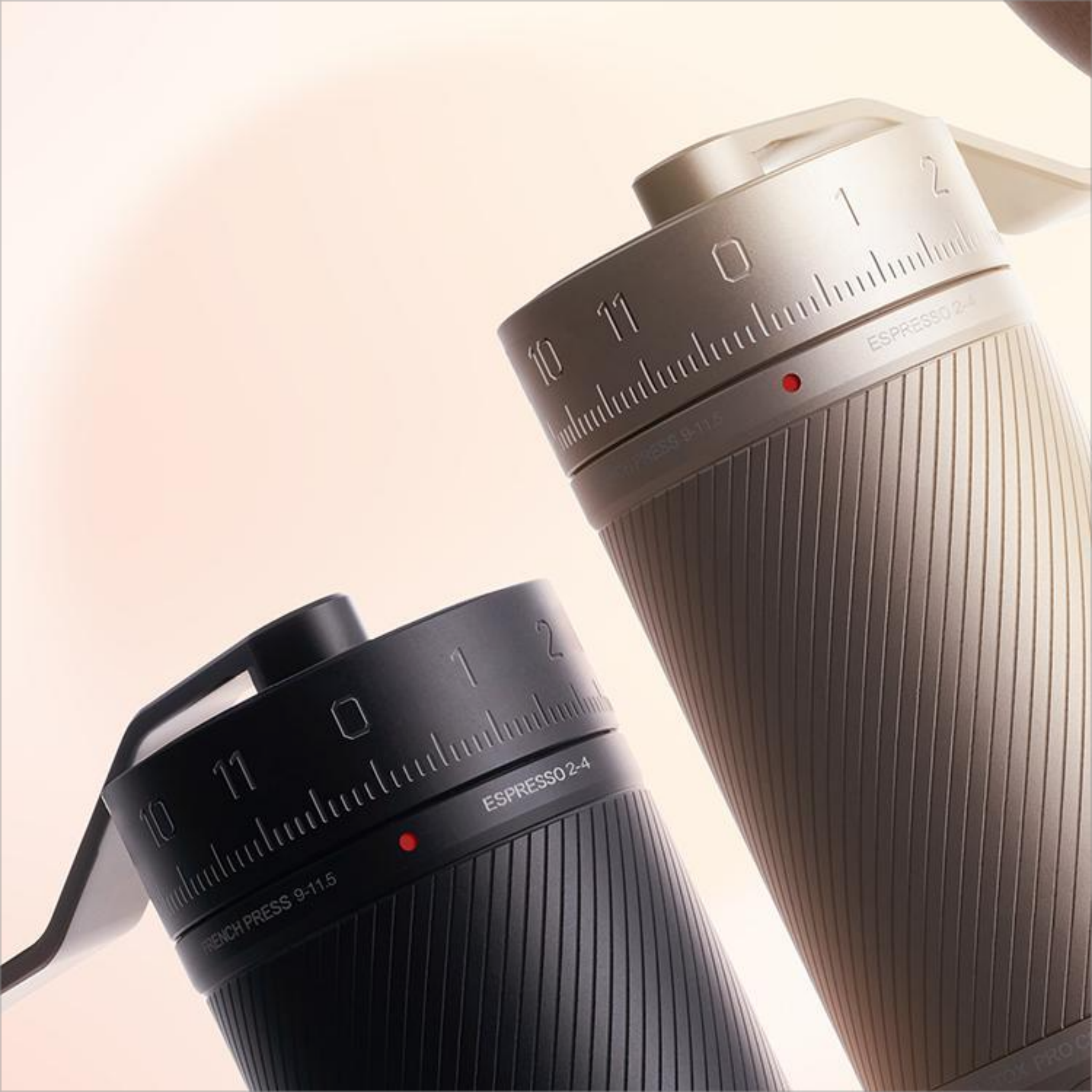
Cutting vs Crushing in Coffee Grinding - Evidence Over Assumptions
by Coffee Analytica Team
·
Why This Conversation Needs Clarity
Much has been written about whether burr grinders “cut” or “crush” beans. You’ll often see claims that cutting leads to better flavour while crushing leads to dust/fines and uneven extraction. These statements circulate widely in blogs and marketing of coffee grinders - but they rarely cite data.
At Coffee Analytica, our stance is clear: we don’t accept assumptions where objective measurable evidence is missing. Instead, we look at what has been proven in research, and what remains speculation.
What We Know From Engineering and Science
Grinding coffee is a problem of fracture mechanics under compression and shear. Burrs apply force, beans fracture, and the result is always a particle-size distribution (PSD).
Evidence-backed insights:
-
Particle Size Distribution (PSD): The most reliable indicator of grinder performance. PSD has long been established as a critical factor in extraction kinetics (Petracco, 2005).
-
Uniformity Matters: Narrow PSD reduces variability in extraction yield (Moroney et al., 2019).
-
Fines Impact Extraction: The Specialty Coffee Association (2017) notes that fines disproportionately increase surface area and can lead to localized over-extraction.
What is not yet proven:
-
That “cutting burrs always taste better than crushing burrs.”
-
That particle shape (angular vs irregular) directly maps to flavour outcomes in controlled sensory trials.
-
That tactile or visual inspections of grounds reliably predict extraction consistency.
These remain hypotheses until more peer-reviewed data emerges.
The Gold Standard: Measuring What Comes Out
Instead of speculating about burr mechanics, the only defendable way to evaluate a grinder is to measure its output.
Methods in practice:
-
Sieve Analysis: Practical, but limited below ~200 μm (hard to measure accurately for sizes under 200 μm)
-
Laser Diffraction / Image Analysis: High precision, used in academic and industrial coffee studies.
-
TDS & EY Correlation: Refractometers connect PSD to extraction outcomes with measurable repeatability.
👉 In short, output measurement trumps input speculation.
Visual Comparison: Tight vs Broad PSD
Here’s a simple illustration of what grinder output differences look like in practice:

-
Tight PSD (solid line): Cutting-dominant or well-engineered burrs - consistent particle sizes, fewer fines/boulders.
-
Broad PSD (dashed line): Crushing-dominant or poorly aligned burrs - wide spread, multiple peaks, more fines.
Why This Matters for Cafés and Brewers
Your grinder is arguably the most important brewing investment - not because of unverified claims about “cutting” vs “crushing,” but because:
-
A grinder with tighter PSD reduces waste from uneven extractions.
-
Consistency translates to repeatable recipes, critical for café operations.
-
Data-led evaluation avoids costly reliance on marketing narratives.
The Coffee Analytica Position
We call out where the industry leans on storytelling instead of evidence.
-
Proven: Uniform PSD improves extraction repeatability.
-
Partially proven: More fines generally correlate with harsher flavours.
-
Unproven: Cutting vs crushing as a binary determinant of cup quality.
This doesn’t mean the idea is wrong - it means the evidence isn’t strong enough yet.
At Coffee Analytica, our mission is to close that gap with measurable data, not anecdotes. Grinder evaluation belongs in the domain of engineering judgment, controlled testing, and published research, not speculation.
References
-
Petracco, M. (2005). Grinding technology and coffee. In Clarke, R. J., & Vitzthum, O. G. (Eds.), Coffee: Recent Developments (pp. 153–192). Blackwell Science.
-
Moroney, K. M., Lee, W. J., & Bond, J. (2019). Effects of coffee grind size distribution on extraction of soluble components. Journal of Food Engineering, 246, 91–97. https://doi.org/10.1016/j.jfoodeng.2018.11.004
-
Specialty Coffee Association. (2017). The Effect of Particle Size Distribution on Extraction. White Paper. Available at: https://sca.coffee/research